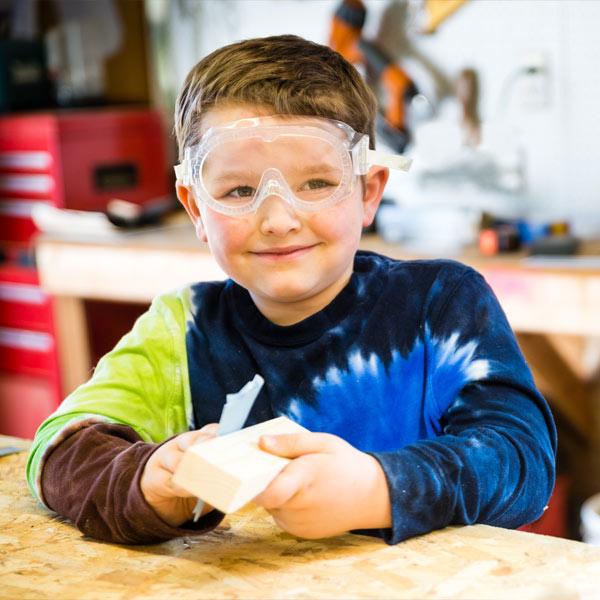This activity, though it appears simple, is deeply engaging for children and effective in establishing flow. Children will gain comfort and familiarity with new tools as they use rasps and sandpaper to transform the shape of a piece of wood.
Materials Required
- Rasps or other household items such as nail files or kitchen graters
- Sandpaper, varying grit sizes
- Wood scraps
- Clamps
- Goggles
Instructions
- Allow children to select a piece of wood and a tool to try.
- Instruct them to clamp their wood to the table and put goggles on.
- Guide children to use their selected tool to change the shape of the wood.
- Once they have figured out how the tools work, give them the opportunity to determine some blunt shapes to try making with the available tools.
Additional Tips
Try these add-on activities:
- For older or more experienced children, try letting them experiment with real hammers and nails or screws and screwdrivers.
- Introduce and discuss the art of whittling. Encourage children to whittle their own creation.


